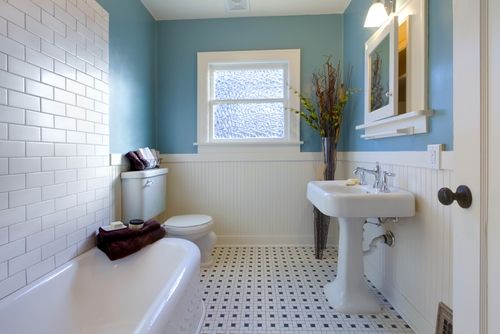The Science of the Flush: Making the Right Choice
September 16, 2016

When it comes to selecting the right toilet for your bathroom, a toilet flush system may have a greater impact than you'd ever expect. Whether you are an eco-conscious homeowner or someone looking to avoid any potential backups and clogs, understanding the distinction between a low flow, high flow and dual flush toilet can help you make the most informed decision.
The history of flushing technology
Prior to the 1990s, all toilet flushing systems were virtually the same: Each flush would deliver anywhere from 2 to 7 gallons of water, activating a gravity-based system that pulled deposited materials down through your plumbing. The conventional wisdom was that the more water used per flush, the more effective the toilet was at limiting clogs or backups.
Beginning in the mid '90s, governments worldwide started becoming more concerned with water conservation efforts. Toilets, as one might imagine, created a significant amount of waste water, which has to be shipped and processed. This not only consumes large amounts of water that could be used for other purposes, but it also has an enormous carbon footprint.
According to Rose George, author of The Big Necessity: The Unmentionable World of Human Waste and Why it Matters, "the sewage system [in the U.K.] uses as much energy as what the largest coal fire station in the [country] produces," which equals out to about 28.8 million tonnes of carbon dioxide a year. In response, governments all over the world passed water conservation laws, many of them mandating that there be a 1.6 gallons-per-flush cap.

"Dual flush toilets give users two distinct options."
The birth of 'low flow'
Researchers studying the problem determined that, by tweaking the design of some toilets, they could function with 1.6 gallons or less per flush. These newly designed toilets were called "low flow," in contrast to the "high flow" or "high capacity" of previous years. While there were initially some issues related to retrofitting flushing technology to function with less water, later designs have been able to harness the power of the low flow flush to great effect.
Dual-flush
A more recent innovation in flushing technology is the advent of dual flush. Pioneered in Australia where water is already scarce, dual flush toilets give users two distinct options: A button to flush liquid waste, which releases 0.8 gallons of water, and a button for solid waste that uses the full 1.6 gallons. By separating the functions, homeowners can cut their water usage dramatically.
Wolseley offers the latest innovations in water saving toilets as well as other environmentally friendly products for your kitchen and bath. Stop by a showroom today to learn more!
